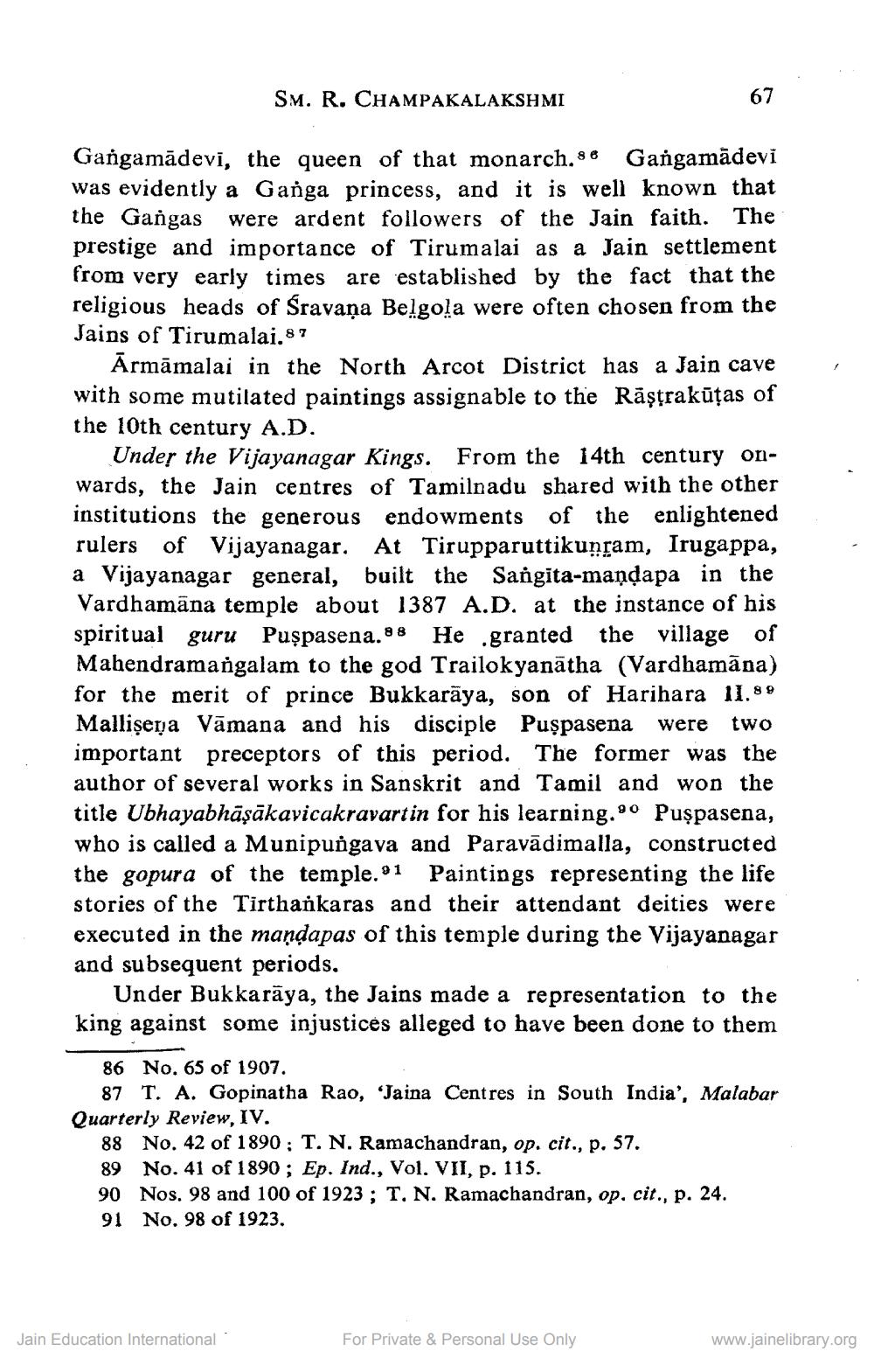________________
SM. R. CHAMPAKALAKSHMI
Gangamadevi
Gangamadevi, the queen of that monarch.se was evidently a Ganga princess, and it is well known that the Gangas were ardent followers of the Jain faith. The prestige and importance of Tirumalai as a Jain settlement from very early times are established by the fact that the religious heads of Sravana Belgola were often chosen from the Jains of Tirumalai.87
67
Ārmāmalai in the North Arcot District has a Jain cave with some mutilated paintings assignable to the Raṣṭrakūtas of the 10th century A.D.
Under the Vijayanagar Kings. From the 14th century onwards, the Jain centres of Tamilnadu shared with the other
institutions the generous endowments of the enlightened rulers of Vijayanagar. At Tirupparuttikunṛam, Irugappa, a Vijayanagar general, built the Sangita-manḍapa in the Vardhamana temple about 1387 A.D. at the instance of his spiritual guru Puspasena.98 He granted the village of Mahendramangalam to the god Trailokyanatha (Vardhamāna) for the merit of prince Bukkaraya, son of Harihara 11.99 Malliṣeņa Vamana and his disciple Puspasena were two important preceptors of this period. The former was the author of several works in Sanskrit and Tamil and won the title Ubhayabhāṣākavicakravartin for his learning. Puspasena, who is called a Munipungava and Paravādimalla, constructed the gopura of the temple. 1 Paintings representing the life stories of the Tirthankaras and their attendant deities were executed in the mandapas of this temple during the Vijayanagar and subsequent periods.
Under Bukkaraya, the Jains made a representation to the king against some injustices alleged to have been done to them
Jain Education International
86 No. 65 of 1907.
87 T. A. Gopinatha Rao, Jaina Centres in South India', Malabar Quarterly Review, IV.
88 No. 42 of 1890; T. N. Ramachandran, op. cit., p. 57.
89 No. 41 of 1890; Ep. Ind., Vol. VII, p. 115.
90 Nos. 98 and 100 of 1923; T. N. Ramachandran, op. cit., p. 24.
91
No. 98 of 1923.
For Private & Personal Use Only
www.jainelibrary.org




